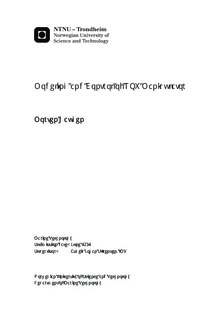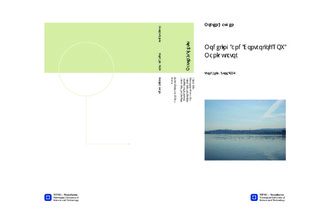| dc.description.abstract | The main objective of this thesis is to investigate and present the most relevant techniques and topics within the field of robot modeling and control. The studies will then be used to develop a working control system for the 'Raptor' manipulator stationed on the ROV 'SubFighter 30K'. Due to insufficient information, a simplified model is made to resemble the actual manipulator. This model forms the foundation of all subsequent actions, including the model based control design. The dynamic model is developed by the well known method of Euler-Lagrange. Since this is an energy based method, both the kinetic and the potential energy of the system must be calculated. Systematic procedures are given to clarify the process of these calculations. In this thesis, a sliding-mode controller is derived and proposed as a suitable controller for the given manipulator. The control objective is to force the manipulator to track a time dependent, desired path in the joint space. However, since it is inconvenient for the operator to specify joint space trajectories, several inverse kinematics algorithms are suggested. Due to the kinematic structure of the manipulator, no closed-form solutions can be obtained. The focus is thus directed towards numerical Jacobian based methods. A full-scale implementation requires a working interface between the developed control system and the manipulator system. For that reason, the main concepts of digital communication are presented. Although no communication data is logged from the Raptor, this presentation will pose an advantage if the work is continued. When no control forces are applied to the dynamic model, the manipulator model is expected to behave like a multi joint, three dimensional pendulum. The simulations corresponds to this assumptions, thus the model is assumed to be correct and valid. Simulations of the complete system shows that the sliding-mode controller works as intended. Two chosen IK algorithms are then implemented and compared through simulations. The DLS method proves to be superior to the simple inverse Jacobian method. Finally, the control system is implemented in LabVIEW and thus prepared for full-scale testing. | nb_NO |

